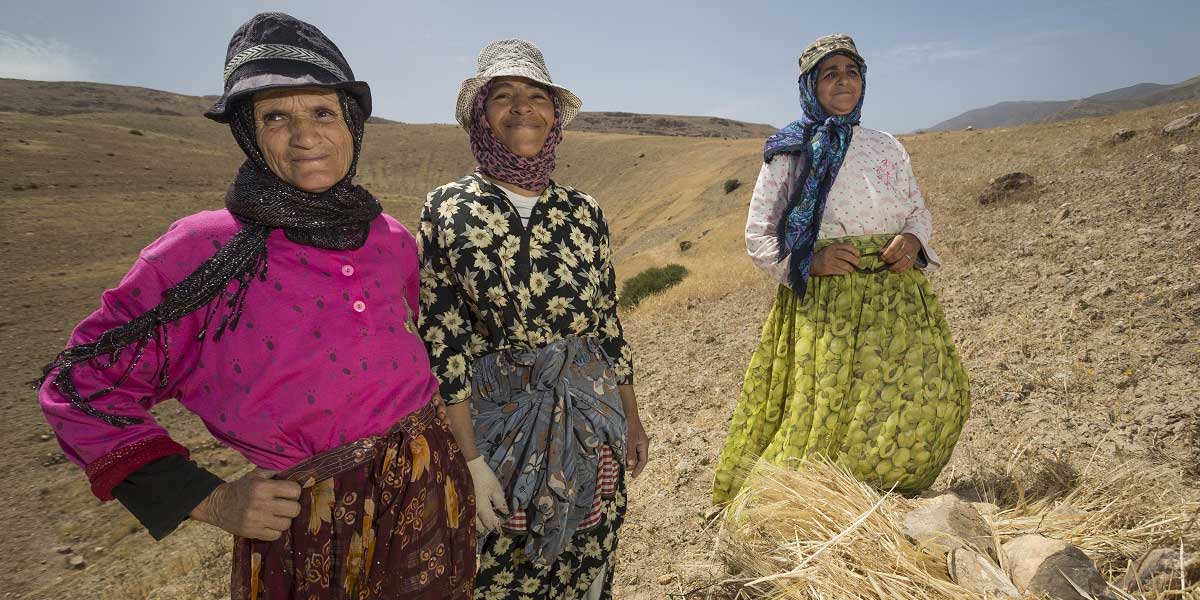Program Overview
MCC’s $650.1 million Morocco I Compact (2008-2013) funded the $15.1 million pilot phase of the Enterprise Support Project based on the theory that training on topics such as accounting, computing, and management for participants of two government programs – National Initiative for Human Development (INDH), which targeted poor and vulnerable populations, and Moukawalati (My Small Business), which targeted youth – would increase their businesses’ survival rates, sales, profits, and ultimately incomes.
Key Findings
Management, Business Survival Rate, and Sales
- In 2012, based on interim results, the scale-up of the MCC-funded training for INDH and Moukawalati was canceled due to a lack of impact on business survival rate and sales. MCC funds were directed to additional training for the initial pilot areas to target these outcomes.
- In 2013, both INDH cooperatives and Moukawalati businesses showed an increase in the probability of survival rate, and (the subset of) INDH participants with fewer sales at baseline showed increases in sales and profits, with no similar impacts detected for Moukawalati.
Durable Goods, Employment, and Income
- In 2013, INDH participants showed increases in their level of durable goods and life satisfaction levels, but there were no impacts detected on employment or income.
- In 2013, no impacts were detected for Moukawalati households.
Examining Differing Impacts and Cost-Benefit Analysis
- Compared to Moukawalati, INDH participants had lower average education levels, management knowledge, and operating risks which may explain why INDH participants had more to gain from the training.
- However, cost-benefit analysis confirmed that the final impacts still did not justify a scale-up of MCC funded trainings.
Evaluation Questions
The final impact evaluations were designed to answer if training and mentorship for (1) INDH participants and (2) Moukawalati participants:
- 1
Increased the survival rate of businesses? - 2
Increased production, sales, and profits of businesses? - 3
Improved employment? - 4
Increased consumption? - 5
Increased incomes?
Detailed Findings
The Morocco I Compact specified that scale-up of the MCC-funded training for INDH and Moukawalati participants would be informed by interim results of the impact evaluations. In 2012, interim results detected no significant changes in survival rate or sales, resulting in the decision to not scale-up the MCC-funded trainings to additional INDH cooperatives and Moukawalati businesses. Instead, MCC-funding was targeted towards increasing business survival rates for the initial pilot sample. The results summarized below are from the final evaluation results.
Management, Business Survival Rate, and Sales
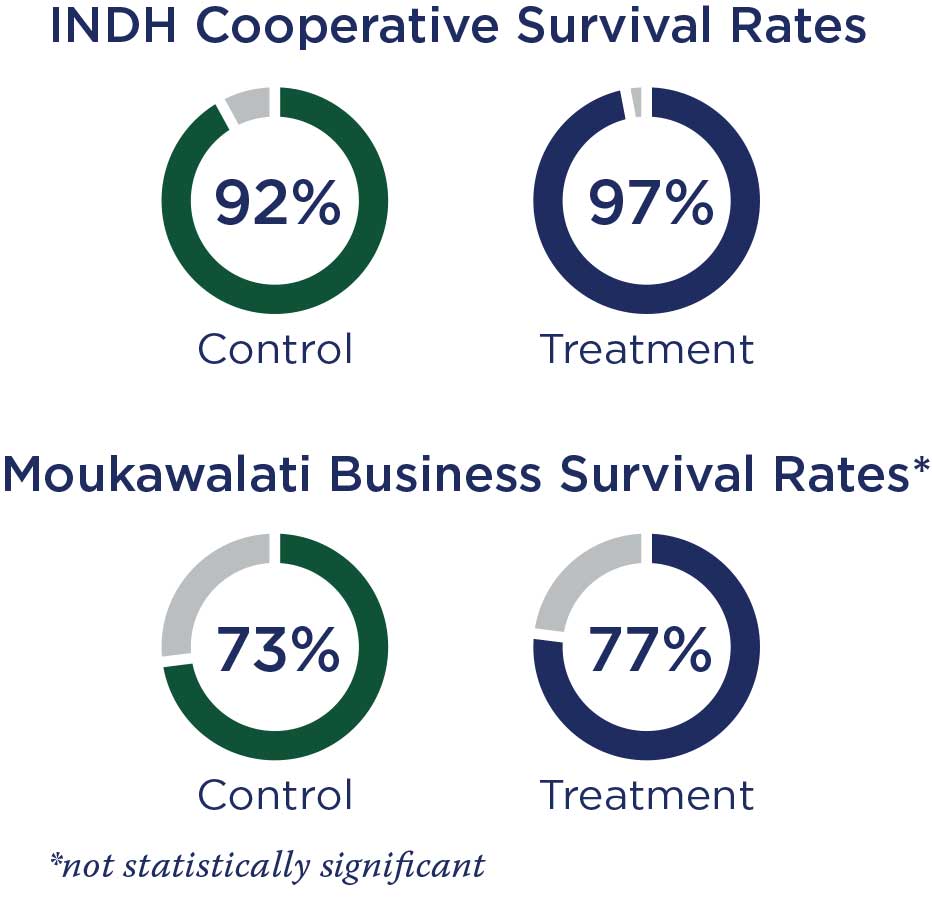
For INDH activities, a quicker shift from association to cooperative status as compared to the control group was detected, but there was no change in use of accounting methods or access to finance. With regards to permanently closing down, the training significantly reduced the mortality rate for Moukawalati 5 percentage points (from 17 percent to 12 percent), but mortality rates were not an issue for INDH activities since only 1 percent had permanently closed. For INDH, there was a positive effect on sales for cooperatives with the fewest sales, with no effect on cooperatives in the top 20 percent of sales. For INDH cooperatives, average declared profits increased 78 percent compared to control cooperatives. For Moukawalati, there were no impacts detected for management practices or sales.
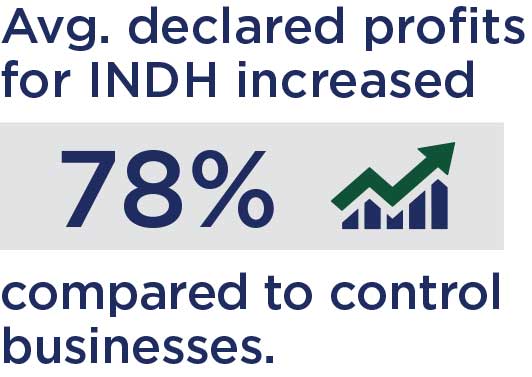
Durable Goods, Employment, and Income
For INDH participants, there was a decrease in debt at the cooperative level and a 15 percent increase in non-food expenditure. Treatment households also showed an increase in the ownership of durable goods and life satisfaction levels, but with no impact detected on employment or income (remained at about 18 percent of mean total monthly income). For Moukawalati, there was a 14 percentage point increase in the use of temporary workers, but otherwise no impacts detected on employment, consumption, or income.
Examining Differing Impacts and Cost-Benefit Analysis
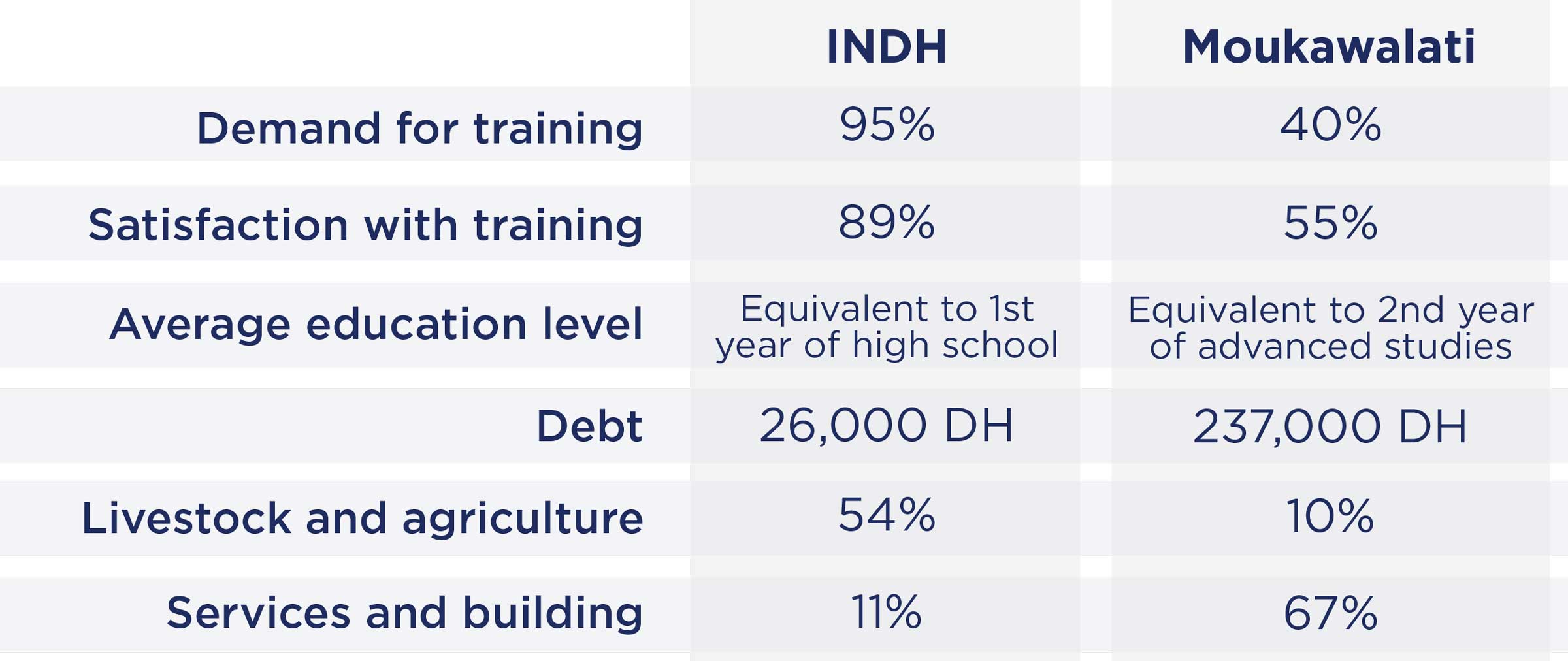
The comparison analysis found several significant differences between the two populations. Compared to Moukawalati participants, INDH participants had lower education levels, and higher demand for and satisfaction with the training. Additionally, INDH participants were less vulnerable on the credit market and used short-term payment terms, while Moukawalati participants were heavily indebted and used longer payment terms. Finally, INDH participants were more involved in livestock and agriculture, whereas Moukawalati participants were more involved in services and building. These differences imply different training, mentorship, and other service needs for INDH participants compared to Moukawalati participants.
Economic Rate of Return
- 13.5%
MCC Original Estimate (2007) - 1.2%
Updated MCC Estimate (2012) - -0.9%
Evaluation-Based Estimate (2014)
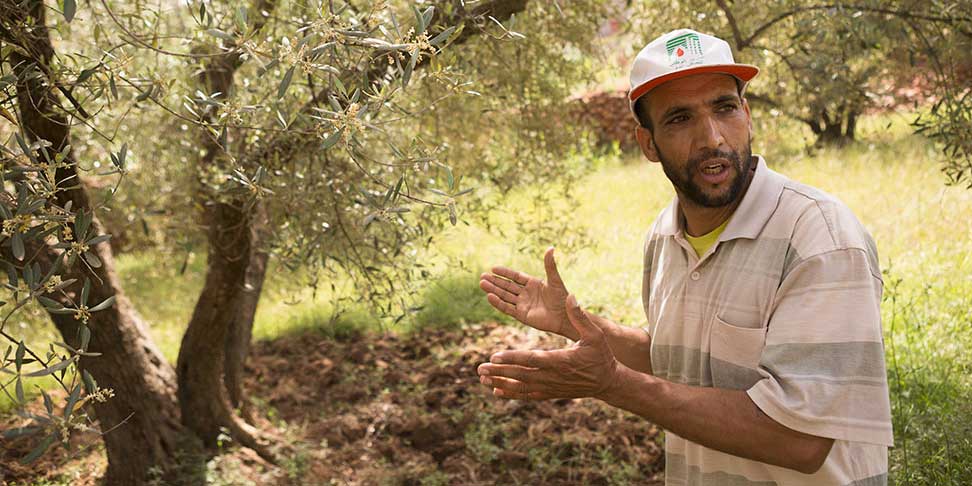
A member of a cooperative in Morocco who received agricultural and technical training.
The benefit streams focused on increases in business survival rate and value-added (as measured by increase in sales) of enterprises, while the cost streams focused on project costs and foregone wages of trainees. In 2012, the impact evaluation detected no significant changes in survival rate or sales, resulting in the decision to not scale-up the project. In 2014, the cost-benefit analysis model was updated by MCC using the findings from the final evaluation. Combined with other data updates (including increased program costs), the closeout ERR was -0.9 percent.
MCC Learning
Similar training programs should consider targeting poor-performing businesses and business owners with lower human capital at baseline who have more to gain from this type of training.
Carefully assess feasibility of using research experiment to inform project scale-up decisions – in particular, exposure periods, project implementation, and project decision timelines all must align.
Future economic modeling may consider that although profits can increase as a result of training, businesses may choose similar actions as IDNH participants and re-invest the profits back into production for equipment rental and the purchase of inputs, diminishing any short-term impacts on income.
Evaluation Methods
Training and mentorship began in January 2011, with final data collection rounds in December 2012, giving an exposure period of approximately 18-24 months.
The INDH and Moukawalati impact evaluations each used a randomized control trial–where eligible enterprises were randomly assigned to treatment or control–methodology. For the INDH, 200 cooperatives were randomly selected out of a total of 600 eligible cooperatives; for Moukawalati, 400 out of 1000 eligible firms were randomly selected. The evaluations relied on the following data:
The comparison report sought to identify the inherent differences between the INDH and Moukawalati populations, without the intervention, that could explain the differential impacts. The analysis uses the 2009 baseline data for all businesses and cooperatives prior to the intervention and the 2012-2013 endline data for all control businesses and cooperatives.
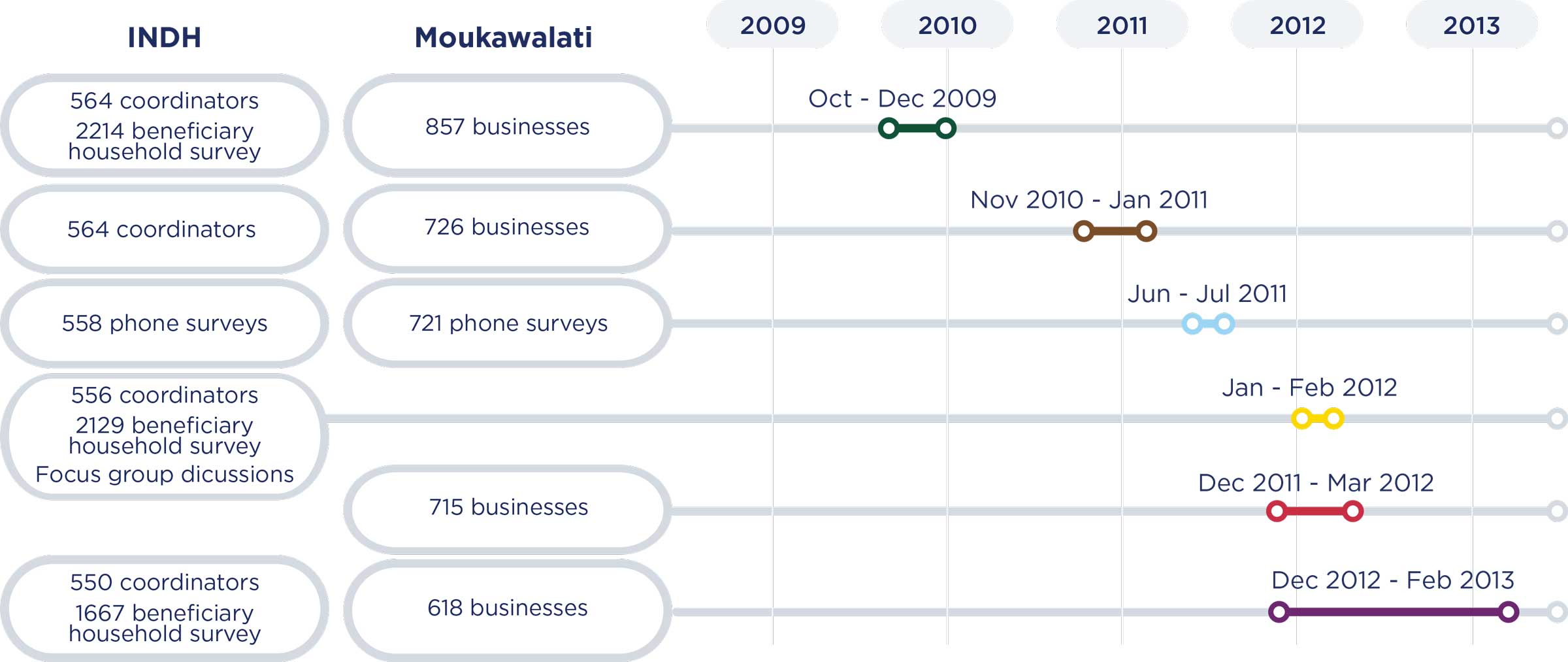
2020-002-2361


